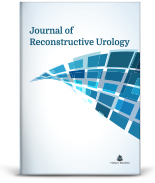Amaç: Nefroloji, anestezi, cerrahi ve postoperatif tedavilerdeki gelişmeler, böbrek nakli uygulanan pediatrik hastaların hayatta kalma oranlarında ve pediatrik böbrek nakli (PBN) sayılarında artışa yol açmıştır. Bu çalışmamızda, PBN yapılan hastaların anestezi ve cerrahi yönetimini gözden geçirmeyi ve PBN deneyimlerimizi sunmayı amaçladık. Gereç ve Yöntemler: Hastanemizde, Mart 2014-Mayıs 2020 tarihleri arasında PBN yapılan hastaların klinik kayıtları geriye dönük incelendi. Sadece 18 yaş altında böbrek nakli yapılan hastalar çalışmaya dâhil edildi, 18 yaş üstü hastalar çalışma dışı bırakıldı. Veriler, klinik takip formları ve hastane bilgi yönetim sistemi kullanılarak toplandı. Bulgular: Çalışmaya, 31 hasta (15 erkek, 16 kadın) dâhil edildi. Hastaların ortalama yaşı 12,6±4,6 (3-18) idi. Donör böbrek, 2 hastada kadavradan, 29 hastada canlıdan alındı. Ortalama ameliyat süresi, kanama miktarı ve iskemi süresi sırasıyla 172±53 dk, 171±59 mL, 54±15 dk idi. Beş (%16) hastada, postoperatif ortalama 2,5 (0-36) saat mekanik ventilasyon ihtiyacı oldu. Hastaların böbrek nakli sonrası ilk 24 saat idrar çıkış miktarları ortalama 7.832±5.012 mL idi. Nakil öncesi ve sonrası ortalama kreatinin değerleri sırasıyla 5,8±2,3 ve 1,16±0,9 g/dL idi. Sonuç: Başarılı bir PBN için her aşamada multidisipliner bir yaklaşım şarttır. Ameliyat sırasında olası komplikasyonların önlenmesi için hazırlık esnasında hastanın nefrolojik optimizasyonu önemlidir. Anestezi yönetiminde ise yakın santral venöz basıncı takibi ve kan basıncı regülasyonu yapılmalı, ayrıca uygun elektrolit ve sıvı yönetimine dikkat edilmelidir.
Anahtar Kelimeler: Anestezi; böbrek transplantasyonu; böbrek yetersizliği, kronik; pediatri
Objective: Advances in nephrology, anesthesia, surgery, and postoperative managements have led to an increase in the survival rates of pediatric kidney transplants (PKT) and the numbers of pediatric patients undergoing kidney transplantation. In this study, we aimed to review the anesthesia and surgical management of patients undergoing PKT and to present our PKT experience. Material and Methods: The clinical records of patients who underwent PKT between March 2014 and May 2020 in our hospital were retrospectively reviewed. Only patients under 18 years of age who underwent kidney transplantation were included in the study, and patients over 18 years of age were excluded. Data were collected using clinical follow-up forms and hospital information management system. Results: Thirty-one patients (15 men, 16 women) were included in the study. The mean age of the patients was 12.6±4.6 (3-18). Organs from living donors were used for 29 patients and organs from deceased donors for 2 patients. Mean operation time, blood loss and ischemia time were 172±53 minutes, 171±59 mL and 54±15 minutes, respectively. Five (16%) patients required mechanical ventilation for an average of 2.5 (0-36) hours postoperatively. The mean urine output of the patients in the first 24 hours after kidney transplantation was 7,832±5,012 mL. The mean creatinine values before and after transplantation were 5.8±2.3 and 1.16±0.9 g/dL, respectively. Conclusion: A multidisciplinary approach at every stage is essential for a successful PKT. Nephrological optimization of the patient during preoperative period is important to prevent possible complications during surgery. In anesthesia management, close monitoring of central venous pressure and blood pressure regulation should be done, and attention should be paid to appropriate electrolyte and fluid management.
Keywords: Anesthesia; kidney transplantation; kidney failure, chronic; pediatrics
- Della Rocca G, Costa MG, Bruno K, Coccia C, Pompei L, Di Marco P, et al. Pediatric renal transplantation: anesthesia and perioperative complications. Pediatr Surg Int. 2001;17(2-3):175-9.[Crossref] [PubMed]
- Sprung J, Kapural L, Bourke DL, O'Hara JF Jr. Anesthesia for kidney transplant surgery. Anesthesiol Clin North Am. 2000;18(4):919-51.[Crossref] [PubMed]
- Collins AJ, Foley RN, Gilbertson DT, Chen SC. United States Renal Data System public health surveillance of chronic kidney disease and end-stage renal disease. Kidney Int Suppl (2011). 2015;5(1):2-7.[Crossref] [PubMed] [PMC]
- Williams A. Paediatric renal transplantation. Paediatrics and Child Health. 2012;22(8):346-50.[Crossref]
- Mittel AM, Wagener G. Anesthesia for kidney and pancreas transplantation. Anesthesiol Clin. 2017;35(3):439-52.[Crossref] [PubMed]
- Othman MM, Ismael AZ, Hammouda GE. The impact of timing of maximal crystalloid hydration on early graft function during kidney transplantation. Anesth Analg. 2010;110(5):1440-6.[Crossref] [PubMed]
- Aulakh NK, Garg K, Bose A, Aulakh BS, Chahal HS, Aulakh GS. Influence of hemodynamics and intra-operative hydration on biochemical outcome of renal transplant recipients. J Anaesthesiol Clin Pharmacol. 2015;31(2):174-9.[Crossref] [PubMed] [PMC]
- Coupe N, O'Brien M, Gibson P, de Lima J. Anesthesia for pediatric renal transplantation with and without epidural analgesia--a review of 7 years experience. Paediatr Anaesth. 2005;15(3):220-8.[Crossref] [PubMed]
- Tugmen C, Sert I, Kebabcı E, Murat Dogan S, Tanrısev M, Alparslan C, et al. Delayed graft function in kidney transplantation: risk factors and impact on early graft function. Prog Transplant. 2016;26(2):172-7.[Crossref] [PubMed]
- Mehrabi A, Golriz M, Khajeh E, Ghamarnejad O, Kulu Y, Wiesel M, et al. Surgical outcomes after pediatric kidney transplantation at the University of Heidelberg. J Pediatr Urol. 2019;15(3):221.e1-221.e8.[Crossref] [PubMed]
- Blohmé I, Fehrman I, Nordén G. Living donor nephrectomy. Complication rates in 490 consecutive cases. Scand J Urol Nephrol. 1992;26(2):149-53.[Crossref] [PubMed]
- Rodricks N, Chanchlani R, Banh T, Borges K, Vasilevska-Ristovska J, Hebert D, et al. Incidence and risk factors of early surgical complications in young renal transplant recipients: a persistent challenge. Pediatr Transplant. 2017;21(7).[Crossref] [PubMed]
- Rossi V, Torino G, Gerocarni Nappo S, Mele E, Innocenzi M, Mattioli G, et al. Urological complications following kidney transplantation in pediatric age: a single-center experience. Pediatr Transplant. 2016;20(4):485-91.[Crossref] [PubMed]
- Yeni̇ce MG, Karadağ S, Sungur U, Akbay FG, Şeker KG, Güler AF, et al. [Use of B-2 microglobulin and pentraxin as an inflammatory marker in the early post-renal transplantation period]. Yeni Üroloji Dergisi. 2020;15(2):121-6.[Crossref]







.: İşlem Listesi